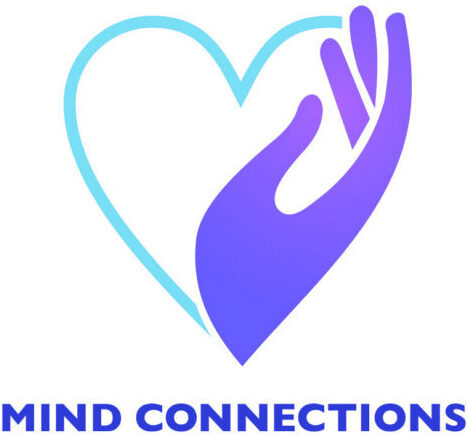How to Practice DBT Radical Acceptance in Life
Do you struggle with handling your emotions? Do you wish you accepted yourself and your life more? Is it time to make a positive change in your life? If so, this article can help! Radical Acceptance can change your life for the better! Read this article to learn more about Dialectical behavior therapy (DBT), emotional regulation, self-acceptance, and more.
It can be challenging to handle your emotions. People with Borderline Personality Disorder (BPD) can struggle with emotional regulation. As mentioned in our previous article about emotional regulation, emotion regulation is the process of “monitoring, evaluating, and modifying” one’s emotions. The goal is to control or deal with emotions healthily and react with appropriate responses.
However, some people may face difficulties in managing emotions flexibly and effectively – these people have emotion dysregulation. Experts report that Radical Acceptance helps people access “acceptance of unchangeable emotions, thoughts, and unchangeable circumstances
What is and What is Not Radical Acceptance
Radical acceptance is largely used in DBT. You may be wondering what exactly Dialectical behavior therapy (DBT) is. As explained by NAMI, DBT is a type of therapy that helps people enact change while finding acceptance throughout the process. Acceptance helps people realize that change is possible and want to take steps to create a difference in their lives.
Acceptance is an important and distinctive part of DBT. Radial self-acceptance is a type of acceptance that DBT promotes; it allows people to accept who they are entirely, even the parts they would rather distance themselves from or not claim.
What is Radical Acceptance
Radical acceptance means you are accepting things as they are and not fighting against reality. In other words, you make a conscious effort to acknowledge and honor difficult situations and emotions, instead of ignoring, avoiding, pretending nothing is happening, or wishing the situation were different. When you are unable to fix or change things, radical acceptance helps you to move through a difficult situation, manage unwanted emotions, move you toward contentment, and reduce distress. As DBT founder Marsh Linehan asserts “rejecting reality usually turns pain into suffering”
What is Not Radical Acceptance
In fact, there are some common misunderstandings about radical acceptance that need to be clarified.
[1]. Radical acceptance does not mean you have to like a situation or action.
For example, someone who is diagnosed with cancer, of course does not like the situation; however, they can still acknowledge the existence of this diagnosis as a reality. This way, at least they save the energy fighting an unchangeable fact and make peace with reality.
[2]. Radical acceptance is not approval of a situation.
In other words, it does not mean you agree with what is happening or what has happened to you. For instance, someone with trauma may find it hard to reveal and discuss it even with their therapist. Acknowledging the reality of what happened certainly doesn’t mean that they approve that traumatic experience or find it “acceptable.”
[3]. Radical acceptance does not mean giving up or complacency.
Again, take the cancer diagnosis as an example. Acknowledging the diagnosis does not mean you give up treatment, or just wait to die. Rather, it actually means having self-compassion, being non-judgmental about the diagnosis, and actively seeking treatment. patients who practiced acceptance-based behavior had less psychological distress while living with their condition. A study showed that cancer patients with acceptance-based behaviors had less psychological distress while living with cancer.
Who Could Benefit from Radical Acceptance
People with BPD
As mentioned before, people with BPD can struggle with emotional regulation, handling their emotions, and coping with destructive or harmful behaviors. When people cannot regulate their feelings healthily, they have trouble responding to situations or stressors in their lives. They can find it hard to accept when hard times or obstacles occur. According to the National Education Alliance for Borderline Personality Disorder, radical acceptance helps someone be receptive to the idea that life “is what it is” and that we can’t hide from the truth. When people can accept the truth and reality of a situation, they will be able to respond more accordingly. People with BPD can better accept that there.
Dealing with Symptoms of BPD
As mentioned in our previous article about BPD, The DSM-5 identifies nine symptoms of Borderline Personality Disorder:
Fear of Abandonment: Many people who have BPD fear abandonment and rejection. People with BPD may feel like they have to reject people before getting rejected – this is a defense mechanism.
Rocky Relationships; People with BPD can experience complex relationships with others. These relationships can turn destructive or toxic.
Unclear Self-Image; BPD can make it hard to develop a clear self-image – this can cause them to be highly critical and harsh of themselves. People with this disorder also find it hard to define themselves.
Impulsive and Reckless Behaviors; People with BPD tend to be impulsive and partake in dangerous behaviors. Some of these behaviors include gambling or drug use.
Suicidal Ideation and Self-Harm; BPD can cause someone to have suicidal and engage in self-harming actions.
Affective Instability & Inappropriate Anger; People with BPD can experience: Intense mood swings that are hard for them to cope with and extreme anger issues and express these emotions at inappropriate times.
Chronic Feeling of Emptiness in BPD; Many people with BPD feel empty inside. Researchers attribute these empty feelings to the disconnect people with BPD feel from others and themselves.
Stress-Related Paranoid Ideation: People with BPD often feel paranoid or constantly watched, judged, and put in danger.
People With Anxiety Disorders
Anxiety can feel like the little voice in your ear telling you that the worst-case scenario will happen. Anxiety makes someone experience worry, nervousness, or fear that is ongoing and excessive. This worry sticks with a person and harms their ability to function. Anxiety can prevent you from living your life normally or being happy. One type of anxiety disorder is panic disorder.
According to the APA, typical signs of a panic attack are a fast heartbeat, shortness of breath, chest pains, sweating, chills, trembling, numb hands, dizziness, nausea, and more. If you or a loved one has ever had a panic attack, you won’t be surprised to hear that the person may even feel like they are dying or having a heart attack.
This CBTdenver article highlights how radical self-acceptance can benefit someone with panic disorder. Their article talks about how accepting your anxiety helps you lessen your symptoms.
People With Depression
Depression can be challenging to deal with. Depression causes people to struggle to complete daily tasks and find hope. People with depression may find it hard to accept their reality is actually happening; they don’t know why or when it started happening, but life began to be draining to experience. They began isolating themselves from others, losing hope, feeling bad about themselves, and avoiding taking proper care of themselves.
Radical self-acceptance can help people with depression accept their situations and themselves. According to NAMI, acceptance in DBT treatment helps people “come to terms with the troubling thoughts, emotions or behaviors that they struggle with,” This clarity allows them to see that change is possible.
People Experiencing Body Image Issues
It can be challenging for people to love their bodies entirely. Sometimes, it is more beneficial for people to focus on accepting their bodies instead. People can benefit from the radical acceptance of their body, fully accepting what their body looks like now and appreciating it for all it does. Ideas like Body neutrality help promote body acceptance.
As mentioned in our past article, the Body Neutrality Movement is about accepting your body for what it is and appreciating it even when you don’t necessarily love it. Body neutrality promotes the idea that even when we dislike our bodies, we will still treat them respectfully and appreciate all they do for us.
How to Practice Radical Acceptance
When do you need the healing power of radical acceptance the most? Apparently it’s during those times in life when you feel truly miserable. Then the paradox is, human beings are not designed to accept misery. On the contrary, the fight or flight mode will be triggered when we feel miserable. Now the question is about, how to practice radical acceptance?
1. Stop and Slow Down When Your Emotions Start to Get Intense
Sure, but it’s easier said than done. When emotions start to get intense, our brain will naturally find it difficult to slow down. How to slow down then?
As much as you want to run away in this situation, the key is to create physical distance and stay there without judgment. When you need time focus on your breathing, do so to slow down gradually. Allow yourself to take a few slow, deep breaths. When you are able to slow down enough, it is more likely that you can register your emotions and greet them with a gentle presence.
2. Observe
Once you are able to slow down, it is easier to observe calmly. Observe that you are questioning or fighting reality. Notice where you may be feeling anger, sadness, or any other distressing emotion in your body. As you breathe slowly in and out, check in with your bodily sensations. Do you feel tightness or tension in your jaw… neck… shoulders… arms… chest… back… stomach… legs… or feet? If so, pause and direct slow, healing breaths toward the sensation. Remember, your physical response to internal discomfort is one way to learn how to regulate emotions. While observing, remind yourself that the unpleasant reality is just as it is and cannot be changed.
3. Acknowledge What is Happening in Life with Mind, Body, and Spirit
Radical acceptance allows you to fully embrace what is happening in your life without pretending that things are different or avoiding the reality of their situation. People often cope by not fully accepting what is happening to them or resisting it. This idea is similar to when people fight the panic attack they are having, which only worsens it.
Allow yourself to face what is happening, even if it can be scary or painful. Accept what is happening and try not to rely on self-harming or destructive behaviors. Use accepting self-talk, relaxation techniques, mindfulness and/or imagery. List all of the behaviors you would engage in if you did accept the facts and then engage in those behaviors as if you have already accepted the facts
4. Find Healthy Ways to Cope
As mentioned in the past section, when you accept what is happening to you, try not to self-sabotage and use unhealthy coping mechanisms. Instead, find activities to help you manage your emotions and feel better.
Some options can be:
- Journaling: Journaling is a great way to explore your emotions, have a creative outlet, and find peace. Sitting down to journal has been seen to help people deal with anxiety and stress.
- Mindfulness: Mindful activities help people center themselves and find calm in the storm. You can try mindful eating, walking, journaling, meditation, etc.
- Hobbies: As mentioned in our article about the benefits of hobbies, having a hobby can improve people’s well-being. Hobbies like gardening, reading, and knitting can all be healthy coping methods.
- Exercise: Exercise has been shown to help people decrease stress and help stabilize people’s moods. Stabilizing your mood can help you deal with emotional regulation.
- Talking With a Friend: Dealing with our problems alone can be difficult. Opening up to a loved one can help us feel lighter and more understood.
5. Open Yourself Up to Change with More Accepting Thoughts and Words
Radical self-acceptance means accepting yourself and your life; it doesn’t mean that you are not willing to change, learn, and grow. Often, acceptance is the first step to making changes in your life. Reflect on your life and how you’d like to improve it.
Ask yourself these questions:
- What challenging experiences have I been going through?
- What people or situations make me feel triggered? How can I prepare myself when facing these things?
- How can I cope healthily?
Radically accepting ourselves means looking at who we are without being mean, judgmental, or avoidant. How you speak to yourself matters; to be more radically accepting, you must think and speak in a kinder, more compassionate way. It can be easy to fall into old patterns, especially if you are used to being negative toward yourself. Try reciting positive affirmations or writing yourself a letter of self-compassion as a challenge today!
6. Practice Body Neutrality & Acceptance
Radical self-acceptance can help you embrace all your body has to offer, what it looks like, and how it carries you through this life. Body neutrality also helps people accomplish this idea.
People who struggle with body issues can benefit from body neutrality. Body neutrality is, like radical self-acceptance, an effort by someone to fully accept themselves for who they are. Loving your body 24/7 can be challenging; aim to accept, respect, and honor your body instead.
7. Consider Therapy
Therapy can help people find radical self-acceptance in their lives. DBT stresses the importance of radical self-acceptance – this type of therapy can help people deal with BPD, anxiety, body issues, depression, anxiety, and trauma, to name a few. A therapist can help you navigate the challenging times or feelings and approach them in a more accepting, calm, and healthy way.
Mind Connections in New York, NY, use evidence-based therapy approach like Dialectical behavior therapy (DBT) and Cognitive Behavioral Therapy (CBT) and mindfulness to help you. Check out our services to learn more!
Content Creator, Victoria Gallo; Reviewed by Dr. June Cao






